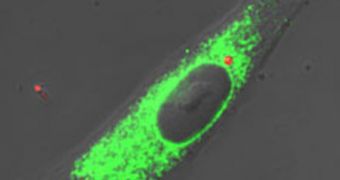Experts in the United Kingdom and Germany have recently announced the development of a new drug-delivery method, which relies on microcapsules and ultraviolet light to get the job done. Essentially, the medicine is loaded unto the capsules, which are then steered to their correct destination. The main goal is to avoid inflicting damage to healthy tissue, the team reports. Once they've arrived, the capsules can easily be ruptured by shining ultraviolet light over them. This ensures a smooth and effective delivery process, which only acts on its targets, Technology Review reports.
“You can keep the capsules in the body for a while, and then you switch [on] the light to release them,” Queen Mary University of London (QMU) Professor of Biomaterials Gleb Sukhorukov, who is also a project researcher, explains. The most amazing advantage about the new microcapsules is that they could, for example, be placed at the site of a surgery, and could be made to release their cargo over several weeks, essentially providing healthcare experts with a new way of dosing medication. The new technique, however, does not imply that the patient needs to come to the hospital every few days.
The new structures could also be of significant importance in gene therapies. In these types of treatments, genes are oftentimes carried by relatively weak structures, which means that they are highly likely to be attacked by immune-system cells and destroyed. This is one of the main issues plaguing gene therapy – only a small portion of the initial genes ever makes it to its destination. Encapsulated in the new microstructures, genes could safely reach their destination, the team says.
The only issue related to the microcapsules that still needs to be taken care of is devising a way of guiding them through the body to the affected cell, as soon as they are introduced in the body. Other nanoparticles that are being used for drug transport are usually guided via magnets to where they need to go. However, the new structures are made up of silica and gold nanoparticles, which means that this option may not be best fitted. As soon as a transport method is devised, experts will begin to use the method for a safe and dosed drug delivery.

 14 DAY TRIAL //
14 DAY TRIAL //